Practice Management Software x EHR = a potent force for practice growth!
Free medical practice management software that simplifies practice and amplifies results. A dynamic healthcare solution that merges EHR, billing, and clinic management for physicians who seek better patient care, and better RCM.




About PMS
BellMedEx practice management software (PMS) is a blessing for doctors who yearn to oversee their healthcare operations effectively. It covers all the bases from arranging appointments, issuing bills, and processing claims, to logging patient visits and keeping track of insurance payors. It also links with EHR, which enables patient information to be stored and transferred across different settings.
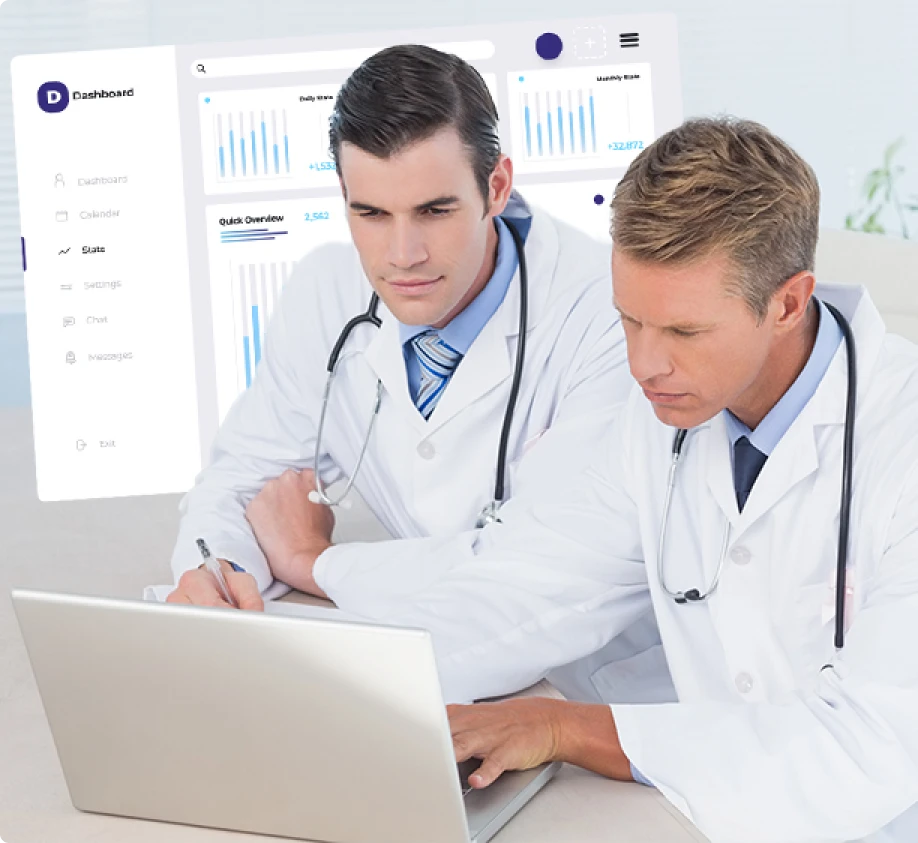

Manage Clinics
Schedule appointments, verify insurance coverage, send electronic bills and reminders, and monitor claims status with no sweat. You can also access patient records, lab results, prescriptions, and referrals from any device.
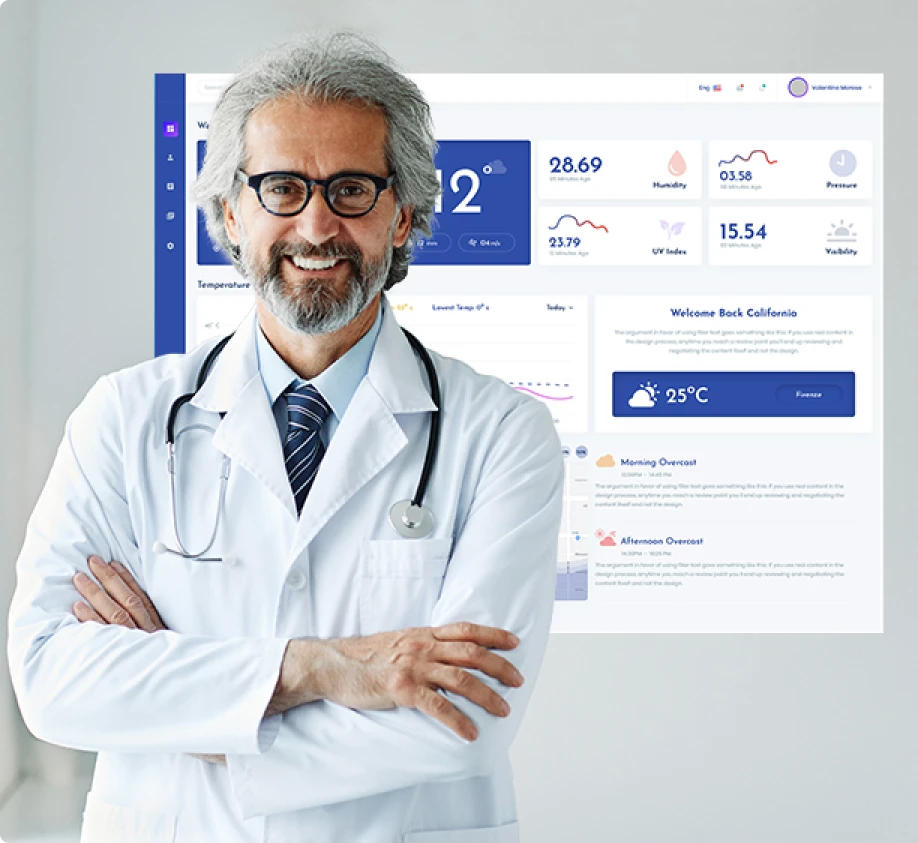

Manage Physician Practices
Code accurately with ICD code sets, submit clean claims electronically and monitor your collections and denials. You can also generate financial reports and benchmarks to weigh your performance and root out areas for improvement.


Manage Therapy Clinics
Formulate treatment plans, jot down progress notes, and charge for your services with our easy-to-use interface. You can also connect with your clients through our secure online portal, where both parties can check appointments and exchange messages.


Manage General Practices
Schedule consultations, enroll patients, and manage payments with our user-friendly system. You can also administer your inventory, order supplies, track expiration dates with our inventory management feature. Our online PMS also supports ePrescribing, lab orders, referrals, and patient education.
Balance the Art of Medicine & the Science of Business
BellMedEx Practice Management Software helps you balance the art of medicine and the science of business, by providing you with the tools and resources you need to succeed.
ICD 10 COMPATIBLE
ICD 10 at Your Fingertips
Our online PMS has an integrated ICD 10 converter that automatically translates existing ICD 9 codes to the corresponding ICD 10 codes. You can use the smart search function to find the most appropriate ICD 10 code for any diagnosis or procedure, using keywords, synonyms, or abbreviations.
There’s also a built-in claim validation tool that can check a physician’s claims for any errors before submitting them to the payer, ensuring that they are compliant with the ICD 10 coding standards.
- Convert and verify codes with automatic ICD 10 converter & claim validation.
- Search and select codes with the smart search function.
- View and compare codes with ICD 9 and ICD 10 codes side by side.
- Bill and collect payments with enhanced superbill designed for ICD 10.

MANAGE PATIENTS
Patient Management Made Simple
Manage patient groups across different clinical measures and get alerts
to any gaps in care, or opportunities for improvement with clinical decision support notifications. Doctors can use the automated patient communication tool to send reminders, alerts, educational materials, and satisfaction surveys to patients via email, text, or phone.
Our web-based PMS lets providers create and manage population health management groups that segment patients based on various criteria, such as age, gender, condition, or location. Physicians can customize care plans and interventions for each group, and monitor their progress and outcomes.
- Manage referrals and authorizations with automated clinical workflows and alerts.
- Streamline patient intake with online forms, digital signatures, and patient portal.
- Optimize your revenue cycle with advanced analytics, dashboards, and benchmarks.

MANAGE CLAIMS
Claim More, Worry Less
Our clinic management software helps medical facilities with electronic claim submission. You can submit claims to any payer in any format, and track the status of your claims in real-time. You can also verify eligibility, check for errors, and generate reports to monitor your revenue cycle.
Use the Claim Wizard to fill out the correct fields for each claim. Then, you can run the Claim Scrubber to check for any errors or warnings before submitting your claims. Finally, you can get tips and feedback from the Claim Analyzer to improve your claim performance and reimbursement.
- Submit clean and accurate claims with automated claim scrubbing.
- Reduce claim denials and rejections with claim validation.
- Speed up claim processing with claim submission that integrates with EHR and clearinghouse systems.
- Monitor and manage claim status with claim tracking.
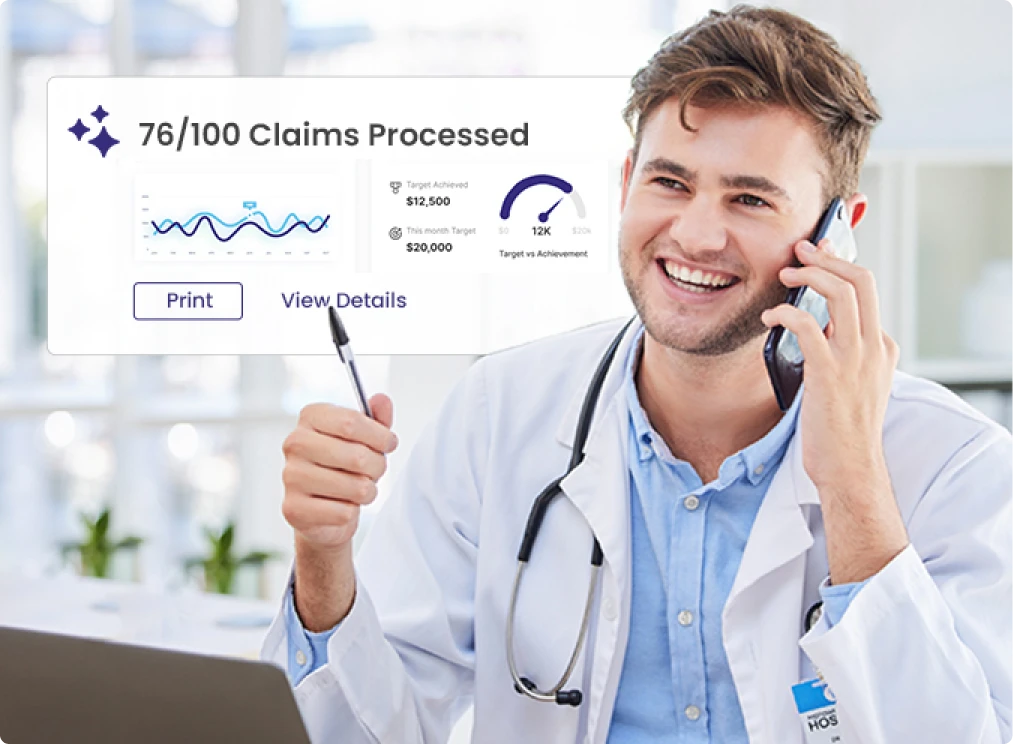
Manage your practice with ease and grace, Because we help you ace the medical space!
Practice management system by BellMedEx is a free online doctor practice manager that automates hectic clinical workflows. For instance, it automates the creation of patient visit records with one click, instead of manually writing them. All of this frees up a provider’s time and energy for the noble art of medicine.
Engage your patient to enhance your practice.
Interact with patients, remind them of appointments, get feedback, and offer online access to health records and resources with patient engagement features.
Optimize your billing to maximize your profits.
Streamline billing, reduce errors, and improve cash flow for healthcare providers with billing and revenue cycle management features. It also manages claims, verifies insurance, and processes payments.
Explore your data to uncover new opportunities.
Monitor performance, find improvement areas, and support data-driven decisions for healthcare providers with reporting and analytics features. It also reports compliance, measures quality and compares benchmarks.
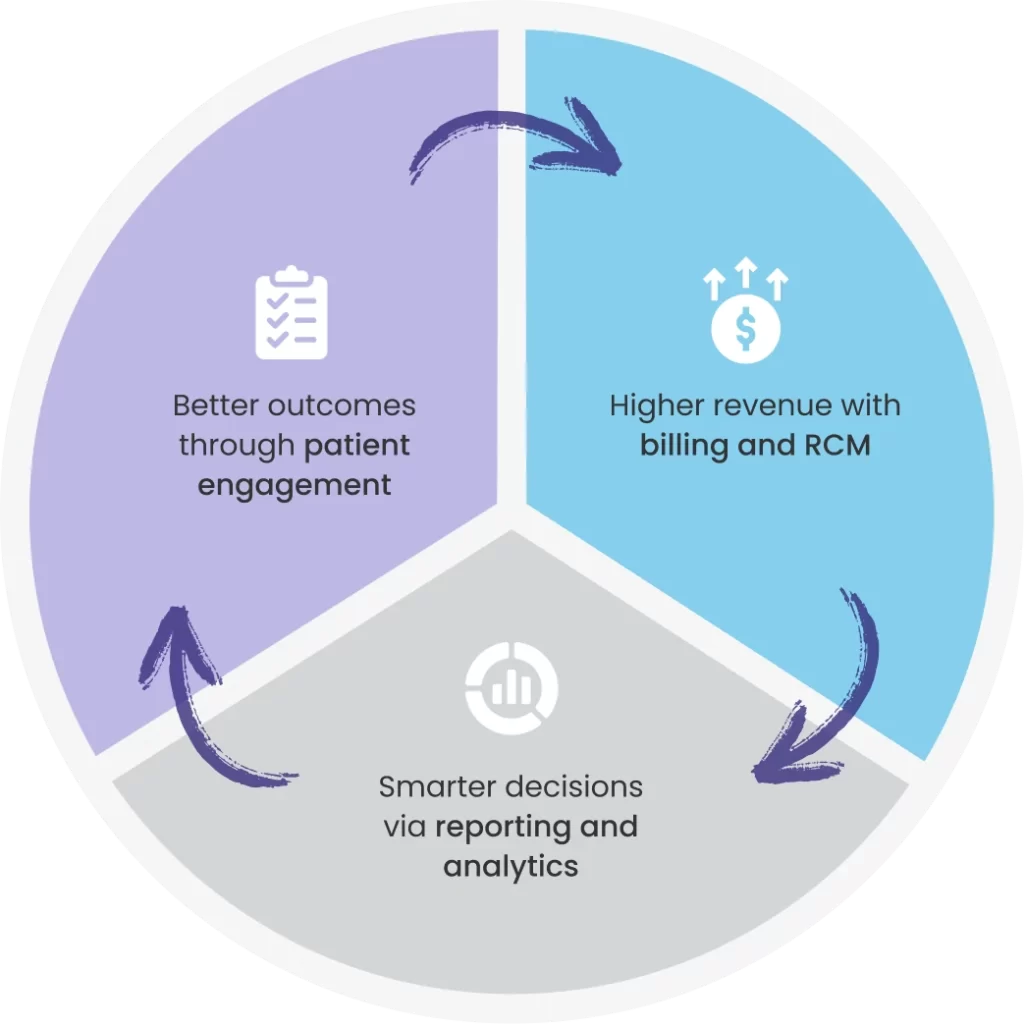
TELEMEDICINE FEATURE
Connect, Care, and Cure
With our healthcare Practice Management Software, you can easily conduct telemedicine sessions with your patients. You can do everything from scheduling, reminding, and billing, to document sharing. You can also talk to your patients through our secure video conferencing platform as if they were in your office.
The Telehealth Dashboard lets you manage your telemedicine sessions, records, reports, and settings. Telehealth Analytics evaluates your telemedicine performance, based on patient satisfaction, clinical outcomes, and revenue.
- Offer remote clinical care with online video consultations, secure messaging, and digital prescriptions.
- Integrate with EHR systems and access patient records, history, and billing information from any device.
- Monitor patient health with wearable devices, sensors, and mobile apps that collect and transmit vital signs and other data.

REVENUE CYCLE REPORTS
Score Billing and RCM Wins
This cloud-based PMS helps clinicians with all aspects of billing and revenue cycle management. Invoice Generator creates professional invoices for your patients and insurance companies, with customizable templates and automatic calculations. The Reimbursement Tracker monitors reimbursements from insurance companies, with timely notifications and reminders.
You can also use the Report Builder to generate various reports and analytics for your billing and financial performance, such as revenue, collections, aging, and profitability. Plus, doctors can customize the invoicing reports and export them in different formats.
- Submit claims at the highest value and track their status in real-time.
- Get notified of any claim denials and their reasons.
- Analyze billing and RCM performance using KPI and Insurance Payment Trend reports.
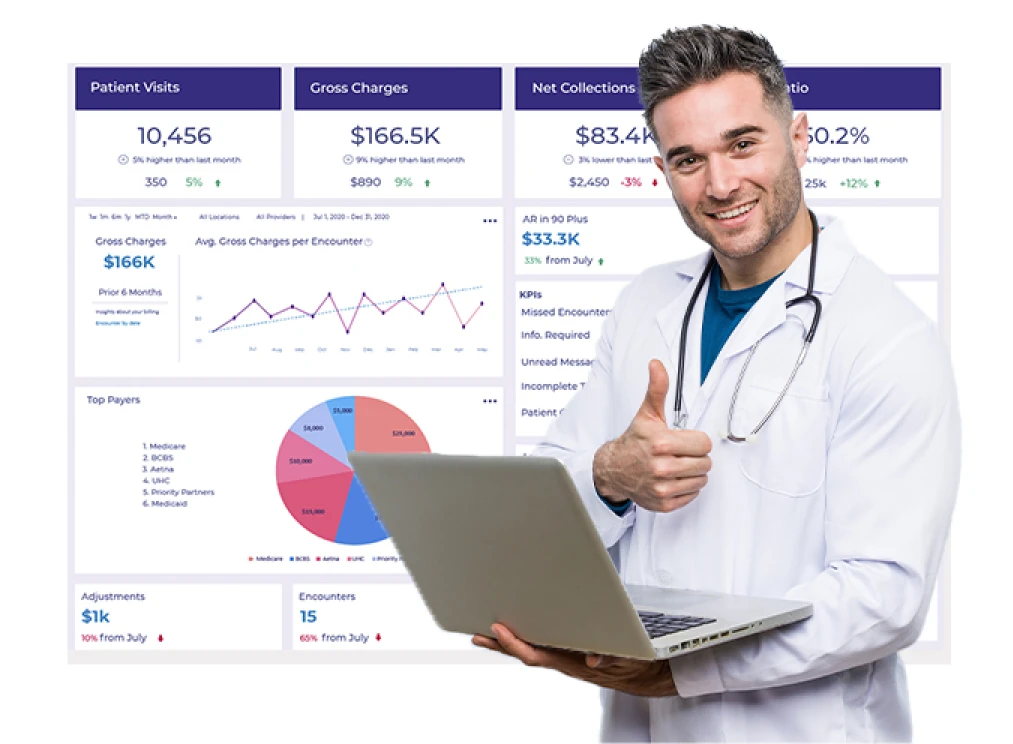
SPECIALTY SPECIFIC PMS
Don't settle for a generic PMS.
Get one that works for your specialty!
You need a practice management software that is on fleek with your specialty and boosts your performance. Worry not, simply holla at our experts to adjust the software to your requirements and expectations.
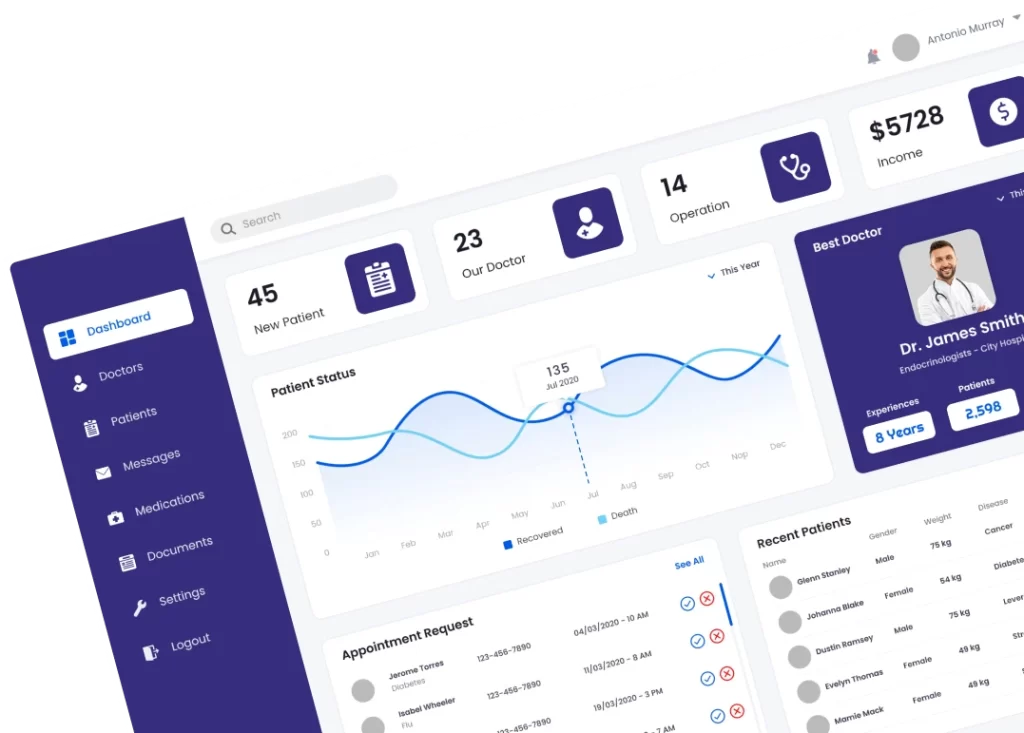
Cloud Based
Our software is hosted on the internet and can be accessed from any device with a web browser. This helps the provider to access their data and manage their practice from anywhere, without worrying about installing or updating the software.
Reliable Support
We got your back all day, every day, for any techy or worky issues you got with our software. This helps the provider to resolve any problems quickly and efficiently, and to get the most out of your software.
Scalable Solution
Our software can roll with the punches and change with your needs, like adding more users, features, or integrations. This helps healthcare facilities to offer better services to their patients, without having to switch to a different software.
Frequently Asked Questions
- What is a Practice Management Software?
Practice Management Software by BellMedex is a healthcare solution that runs on the cloud and helps medical facilities and providers manage their daily operations, such as scheduling, billing, reporting, and patient engagement. It is designed to be easy to use, secure, and compliant with HIPAA and other regulations.
- How can I try this software for free?
You can sign up for a free demo by filling out a simple form on our website. You will get access to all the features and functions of the software for a limited time. You can also contact us to schedule a live demo with one of our experts. No credit card is required for sign up.
- How secure is this software?
Our software uses advanced encryption, authentication, and backup technologies to protect your data from unauthorized access, loss, or corruption. We follow the best practices and standards of HIPAA, HITECH, and other regulations. We also perform regular audits and updates to ensure the security and reliability of our software.
- How can this software benefits my practise?
BellMedEx Practice Management Software is a cloud-based solution that can help you improve your practice’s efficiency, profitability, and patient satisfaction. It offers various features that can benefit your practice. This includes clinic management, patient engagement, analytics tracking, and claims tracking. You can also store and manage your documents safely in the cloud, following the HIPAA guidelines.
- Can I integrate this PMS with EHR systems?
Our PMS integrates seamlessly with most EHR systems through standard interfaces and protocols. You can exchange patient information, clinical data, billing records, and other documents between the two systems without any hassle. You can also use our API to connect with other third-party applications.
- Can I customize my PMS dashboard?
Yes, we can customize your PMS dashboard according to your needs and preferences. You can choose which widgets, charts, graphs, and reports you want to see on your dashboard. You can also drag and drop, resize, and rearrange them as you like. Plus, you can save your custom dashboard settings and switch between different views anytime.
- Easy registration
- Access 24/7
- Specialty specific
Free PMS? We Know You Want It.
Try It Now for FREE!
You don’t have to pay anything to use our PMS, But you will get will get a lot of value from it. It will help you manage your health center, track your progress, and deliver quality patient care. Try it now and enjoy the peace of mind.

